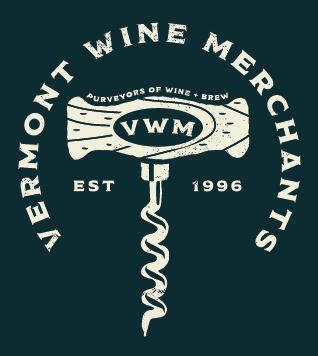Legends seem to converge at the Ermitage du Pic St-Loup. The hermitage dates back from the Middle Ages, as the former home of the bishops of Maguelone. The limestone peak or “pic” perched above the vineyards was named for the legendary Saint Thieri Loup, one of three pious, crusading, brothers and suitors to the beautiful Bertrade—after her untimely death, Loup became a hermit. In 1992, the Ravaille brothers (Xavier, Pierre, and Jean-Marc) joined forces to plant a vineyard in what has traditionally been land dominated by sheep farming and cheese production. The Ravaille family has been in the Languedoc for over one thousand years, long enough to have known Saint Loup personally. These brothers have been on a noble quest of their own to create serious wine that expresses the complexity of their terroir. The three fish on the label’s emblem therefore not only evoke the story of Saint Loup, but also their fraternal collaboration. Within the first few years, the Ravailles came to the conclusion that introducing biodynamic farming practices would allow them to make the wine they wanted. Though they have been using this methodology since 1999, as of 2012 vintage they are certified organic.
According to James E. Wilson, in his fabulous book, Terroir, the complexity and variety of soil types in the Languedoc is attributed to the geological phenomenon known as the “Languedoc-Roussillon Symphony.” This slowly evolving collision of continents and bodies of water has perpetrated upheaval, creasing, and erosion, leaving a medley of sedimentation. Soils from the Ravaille’s higher-altitude vineyard slopes vary between the dominant marly limestone and dolomite, to red and white clay, to sand, schist, and round galets. The microclimate in Pic St. Loup is also particularly unique in this otherwise dry region. Though the summers are typically very dry, cool nights and winter rainfall allow for long ripening of the grapes and sufficient water supply. The brothers keep their vinification as non-interventionist as possible. All of these special elements of their philosophy and methodology translate into wines with a purity of fruit, extraordinary delineation of layers, and a distinct sense of place.
Their personal wine cellar is filled with masterly bottles from the likes of Coche-Dury, Raveneau, Tempier, among other gems. They aim high.
Languedoc Pic Saint Loup Rouge “Tour de Pierres”
Blend: 50% Syrah, 40% Grenache, 10% Mourvèdre
Vine Age: 30 – 40 years
Soil Type: Red Clay
Vineyard Area: 20 ha
In 2001, the vignerons of Pic Saint Loup pleaded their case to the I.N.A.O., asking for the right to their own A.O.C. As of yet, the request is still pending, however in 2007, Pic Saint Loup was granted its own denomination within the A.O.C. Languedoc (formerly known as A.O.C. Coteaux du Languedoc). Although the front label reads “Pic Saint Loup” the back label specifies that it is a designate of the general Languedoc appellation.
• Grapes are partially de-stemmed (20-40%) depending on the vintage
• Natural fermentation for all wines
• Reds are aged in foudres and barriques of which only 10-20% are new oak
• “Tour de Pierres”is aged for 12 months
• Wines are bottled unfiltered
